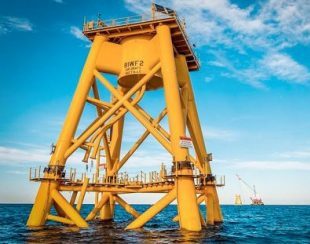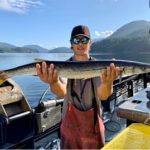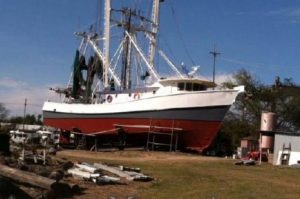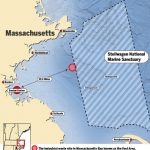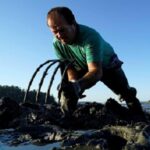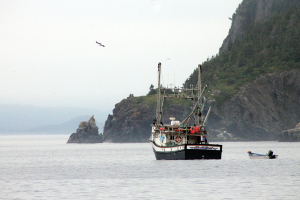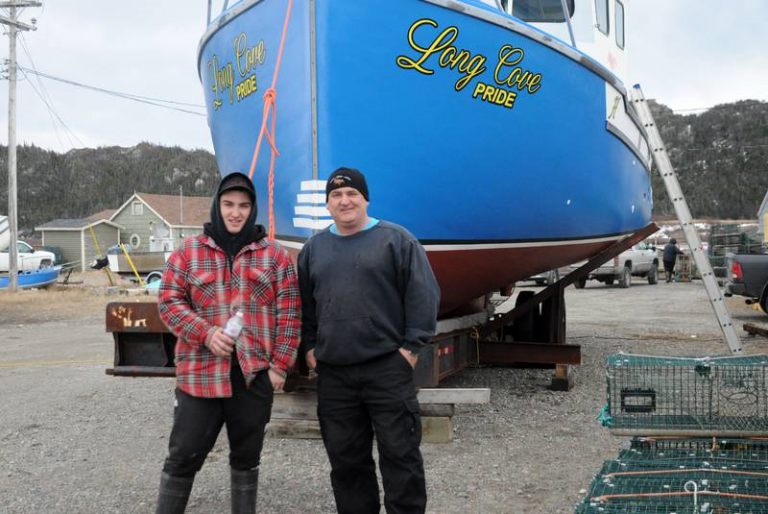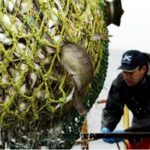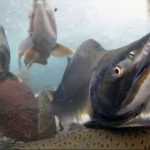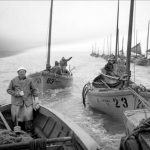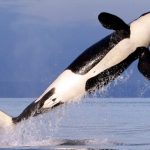Daily Archives: April 3, 2018
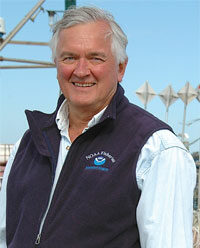
John Bullard’s Right whale challenge angers lobstermen
Bullard may have left behind the daily responsibilities of running the Greater Atlantic Regional Fisheries Office, but he took his bully pulpit with him. On Monday, he published an op-ed piece in the Boston Globe challenging the U.S. commercial lobster industry — predominately based in Maine and Massachusetts, where Gloucester and Rockport are the top ports — to take the lead in trying to head off the extinction of the North Atlantic right whales. While he also carved out a role for scientists, non-governmental organizations and fishery managers in the hunt for solutions, Bullard’s emphasis on the lobster industry did not sit well with local lobstermen, who believed their industry was being singled out. >click to read<19:02
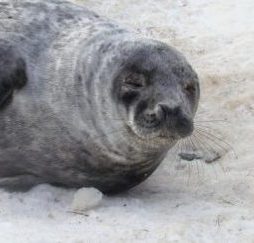
Call for Increased Seal Hunt as Population Surges
Hungry East Coast seal populations have surged in recent decades, spurring calls for an increased seal hunt — and even a possible cull — to protect fragile caplin and northern cod stocks. The Northwest Atlantic harp seal population is estimated at about 7.4 million animals — almost six times what it was in the 1970s, according to the federal Department of Fisheries and Oceans. Grey seal numbers in the Gulf of St. Lawrence have grown from about 5,000 animals in 1960 to an estimated 98,000 in 2014, according to the department. >click to read<16:04
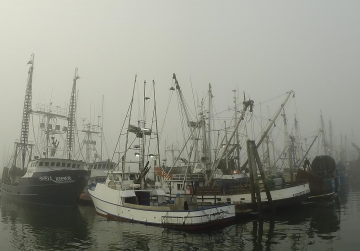
New study reveals cost of 2017 salmon fisheries closure
Last year’s closure of the commercial ocean salmon troll fishery off the West Coast is estimated to have cost $5.8 million to $8.9 million in lost income for fishermen, with the loss of 200 to 330 jobs, according to a new model that determines the cost of fisheries closures based on the choices fishermen make. Scientists hope the model, described for the first time this week in Marine Policy, will help policy makers anticipate the economic toll of fisheries closures. >click to read<15:40
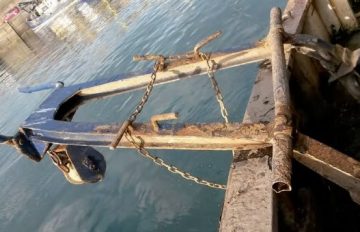
Lessons learned: Submarine snagging into fishing gears
It was a clear, calm day and a prawn trawler was towing its nets in coastal fishing grounds; the depth of water was about 100m and there were over 60 fishing boats, mainly trawlers, operating in the area. At the same time, a nuclear-powered submarine was conducting a submerged passage through the area. The submarine was deep below the surface where periscopes and radar could not be used; this meant that it was reliant on its sonar systems to detect noises from other vessels in order to avoid them.,, As the submarine approached the fishing grounds, >click to read<15:08
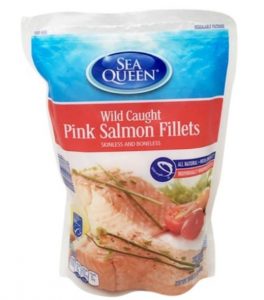
China’s fish
The national seafood media was Monday atwitter with speculation China might impose tariffs on American seafood, and Alaska Commissioner of Commerce Mike Navarre was trying to spin the state’s proposed liquified natural gas (LNG) project as some sort of shelter against a looming U.S.-China trade war. “For now, China appears to be leaving Alaska seafood alone,” added reporter Liz Raines. There was no “appears” about it.,, Why? Because China – sometimes with the help of North Korean serfs – has turned Alaska fish into a moneymaker for China. >click to read< 14:16
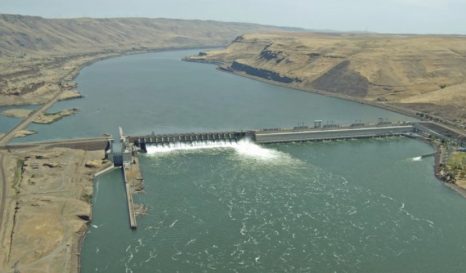
Appellate court orders more water over Columbia, Snake dams to aid fish
More water will flow over several federally operated Northwest dams beginning Tuesday, a day after conservationists and the state of Oregon won a court victory in the long-running battle over the plight of salmon and steelhead in the region. A panel of judges at the U.S. Court of Appeals for the Ninth Circuit affirmed a district court order to protect juvenile fish migrating downstream on the Columbia and Snake rivers by increasing spill at eight dams. This fight has been going on since 2000, when the National Wildlife Federation challenged the National Marine,,, >click to read<13:04

Coast Guard assists disabled fishing vessel 40 miles east of Atlantic City, NJ
The Coast Guard assisted a disabled fishing vessel 40 miles east of Atlantic City, New Jersey, Sunday. Watchstanders at Coast Guard Sector Delaware Bay were notified at about 10:30 p.m. via VHF-FM channel 16, that the 90-foot fishing vessel Margaret Rose carrying seven people was disabled from engine failure. Once on scene, the USCGC Dolphin crew towed the vessel to Cape May, New Jersey, where the fishing vessel anchored and is awaiting commercial salvage. >click to read<12:21
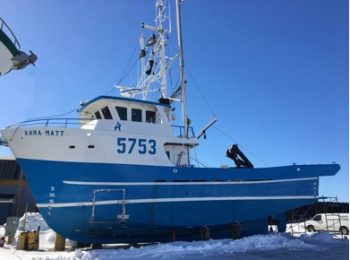
Fishing Vessel Repowered after Big Hours
After 60,000 hours of service, crab fisherman Robert Ross decided that his 19-liter Cummins 1150M had earned a rest. The 500 HP engine had been a perfect match for his 72- by 26-foot aluminum boat so he ordered up a new Cummins KTA19-M3 at 500 HP, continuous duty, from his local supplier Cummins Sales and Service in Fredericton, New Brunswick, in eastern Canada. Ross had his well-maintained 39-year-old boat, the Kara-Matt, hauled out at a shipyard and Dugas Equipment Ltd. of Caraquet, New Brunswick took on the repower. >click to read<11:12
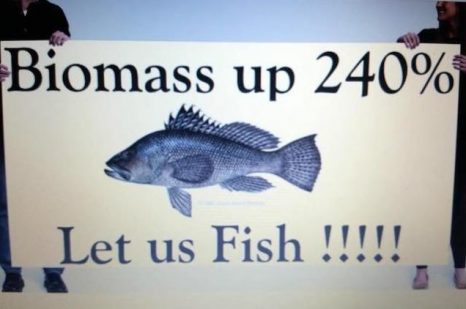
Black sea bass quota reduction for N.Y. has local lawmakers up in arms
The decision last month by the Atlantic States Marine Fisheries Commission to reduce New York’s black sea bass quota by 12 percent this year has anglers, state environmental regulators and local lawmakers up in arms. “This action discriminates against the State of New York. It would have a significant adverse effect on the Long Island economy,” State Senator Ken LaValle (R-Port Jefferson) and Assemblyman Fred Thiele (I-Sag Harbor) said yesterday in a joint statement. New York has joined Massachusetts, Rhode Island and Connecticut in an appeal,,, >click to read<09:12






